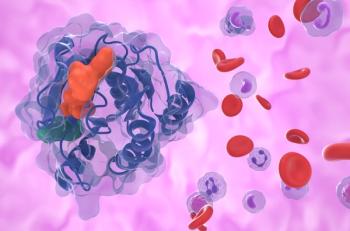
Physicians urged to return to statins after announcement of ENHANCE results
Experts urged a “return to statins” after hearing the final results of the Ezetimibe and Simvastatin in Hypercholesterolemia Enhances Atherosclerosis Regression (ENHANCE) trial, which demonstrated no slowing of carotid atherosclerosis progression with the addition of ezetimibe to simvastatin therapy.
Experts urged a “return to statins” after hearing the final results of the Ezetimibe and Simvastatin in Hypercholesterolemia Enhances Atherosclerosis Regression (ENHANCE) trial, which demonstrated no slowing of carotid atherosclerosis progression with the addition of ezetimibe to simvastatin therapy. These results were presented at the 57th Annual Scientific Session of the American College of Cardiology (ACC), March 29 to April 1, 2008, in Chicago, Illinois.
Despite a further reduction in low-density lipoprotein (LDL) cholesterol and the level of C-reactive protein (CRP) with the addition of ezetimibe to simvastatin treatment, “we saw no change between carotid arteries of patients taking simvastatin and those taking simvastatin-ezetimibe,” said lead investigator John J.P. Kastelein, MD, PhD, professor of medicine and chairman of the department of vascular medicine, Academic Medical Centre of the University of Amsterdam, the Netherlands.
The double-blind, randomized trial included 720 patients with familial hypercholesterolemia. Patients were randomized to 24 months of treatment with simvastatin 80 mg/d plus either ezetimibe 10 mg/d or placebo.
B-mode ultrasonography was used to assess intima-media thickness (IMT) of the carotid and femoral arteries. The primary outcome was the change from baseline in the mean carotid IMT (right and left common carotid arteries, carotid bulbs, and internal carotid arteries).
The mean level of LDL cholesterol decreased from 317.8 mg/dL at baseline to 192.7 mg/dL at 24 months in patients randomized to simvastatin alone and from 319.0 mg/dL at baseline to 141.3 mg/dL at 24 months in patients randomized to simvastatin plus ezetimibe, a between-group difference of 16.5% (P<.01).
Patients treated with combination therapy demonstrated a 25.7% greater reduction in levels of CRP versus those treated with simvastatin alone (P<.01).
Despite the favorable changes in LDL cholesterol and CRP values with the combination treatment, the change in carotid artery IMT from baseline differed by only 0.0053 mm between the 2 treatment groups (P=.29).
Both regimens were well tolerated and there were no safety issues associated with ezetimibe treatment, said Dr. Kastelein.
He offered 3 potential explanations for the failure of simvastatin plus ezetimibe to achieve its primary end point. The first-that the measurement technique was not accurate enough to reflect changes in atherosclerotic burden-“is highly unlikely,” he stated.
The second possible explanation is that the decrease in LDL cholesterol levels observed with the addition of ezetimibe does not translate into a benefit for the arterial wall. Dr Kastelein stated, “That is a possibility, but a trial like this is never meant to elucidate the mechanisms, so we don’t know until we have large end point trials.”
According to Dr Kastelein, the most likely explanation for the failure of simvastatin plus ezetimibe to achieve the primary end point is that the population studied was at too low of a risk for changes to be detected, which would limit investigators’ ability to detect a differential response. This possibility is reasonable, given that >80% of the patients had taken high-dose statins for long periods before being enrolled into ENHANCE, said Dr Kastelein.
Harlan M. Krumholz, MD, professor of medicine and epidemiology and public health (cardiology) at Yale University, New Haven, Connecticut, refuted the “low-risk” hypothesis. As a member of a panel convened by the ACC to discuss the results of ENHANCE, Dr Krumholz said that the most likely explanation for the lack of benefit with the addition of ezetimibe to simvastatin therapy is that “the compound did not work.” He stated, “This study provides us no clinical evidence to support use of this drug, and it moves us to more uncertainty about the benefit of this drug.”
Dr Krumholz stated that physicians in the United States were quick to adopt ezetimibe into practice; by 2006, only 4 years after introduction of the drug, 15% of all prescriptions for lipid-lowering medications in the United States included ezetimibe.1 This rapid uptake was accompanied by a decline in statin prescriptions and use of lower doses of statins, at a time when high-dose statins were demonstrated to be superior to low-dose statins on outcomes in the highest-risk patients.
“The strongest recommendation we can make is to turn back to statins, especially those with favorable outcomes data,” Dr Krumholz said. He added, “The principal harm is that [use of ezetimibe] drains precious resources from our healthcare system.”
The ENHANCE results have been published in the New England Journal of Medicine (2008;358:1431–1443).
Reference
1. Jackevicius CA, Tu JV, Ross JS, Ko DT, Krumholz HM. Use of ezetimibe in the United States and Canada. N Engl J Med. 2008;358:1819–1828.
Newsletter
Get the latest industry news, event updates, and more from Managed healthcare Executive.

















































